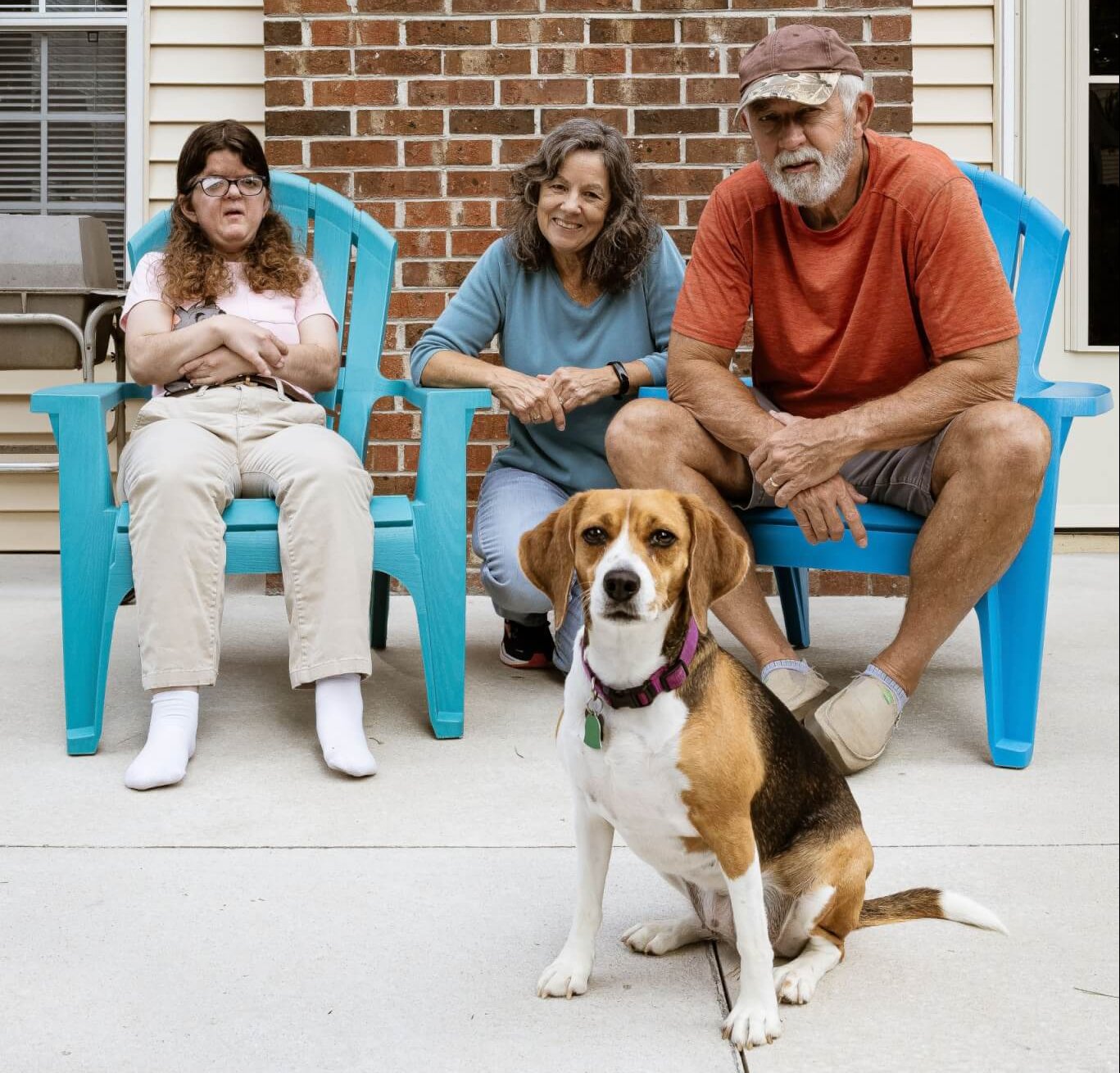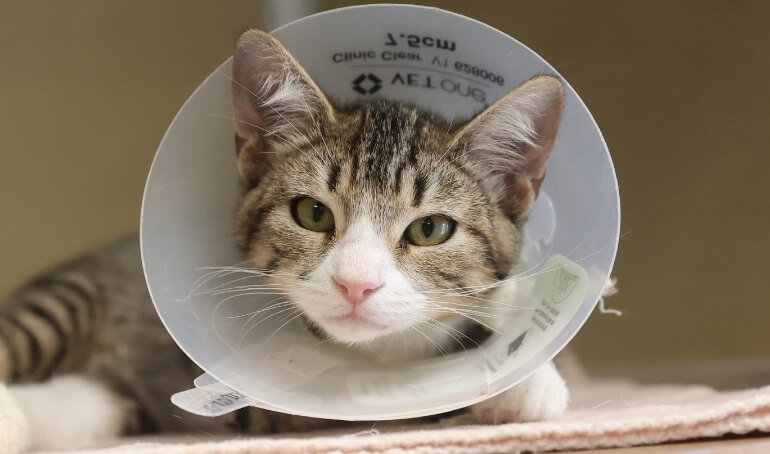
Behind the Scenes of the VBSPCA Clinic
Have you ever wondered what it is like to work at an animal shelter? Here at the Virginia Beach SPCA, we have more than 60 employees who connect people and pets. Our team members serve in a variety of roles, and each individual is an integral part of working towards the mission of ending animal suffering while increasing human compassion. This month we want to take you behind the scenes of the VBSPCA Clinic.
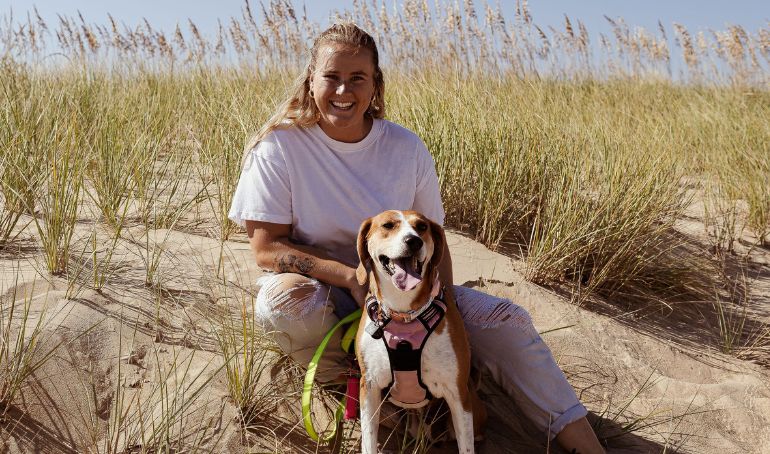
Happy Tails | Dixie
Every single animal that comes through our shelter has a story. Some are complex, many are sad, but all of them get better the minute they arrive at the Virginia Beach SPCA. Dixie was transferred to the VBSPCA from another local animal shelter in January 2023. The one-year-old hound had recently given birth to a litter of puppies. Dixie was an excellent mother, and once the puppies were healthy and strong enough for the adoption process, they all quickly found their homes.
However, it took Dixie more time to find her happily ever after. In addition to needing a home, she needed medical treatment for heartworm disease. While generous donors covered the cost of her treatment, she had to find a special home to help her through the treatment process. That May, Dixie found that special someone in Doris, who eventually adopted her. We recently caught up with Doris for the full story.
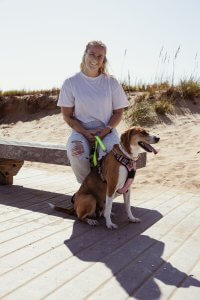 How did you know Dixie was the one for you?
How did you know Dixie was the one for you?
I was visiting the VBSPCA in hopes of finding a dog to adopt, and when I saw Dixie, I just knew I had to meet her. I was able to visit Dixie during her outside time. She was soaking up the sun, so I already knew I was going to love her. I walked up to Dixie and she immediately jumped up so gently. I knelt down and she put her paws on my shoulders and gave me the biggest hug. I knew right away that I was going to adopt her. In that moment I promised Dixie that I was going to take her home with me and that I would be here to take care of her for the rest of her life.
How is Dixie doing in the home?
Dixie is doing great! It took a little bit of time for her and her cat brother, Taz, to start getting along but now they’re like your typical brother and sister! They love playing together and taunting one another! Dixie has made herself right at home, jumping up on the couch and bed whenever she wants.
What sort of activities do you do together?
Dixie was heartworm positive when I adopted her so we haven’t been able to do too many activities, but we’ve made the most of it! She loves snuggling, going out on my back deck, and car rides! I have a convertible and Dixie loves it when the top is down and going for drives near the beach.
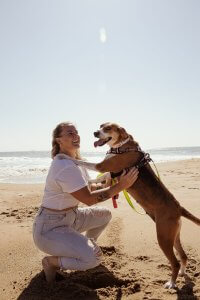 Does Dixie have any funny quirks?
Does Dixie have any funny quirks?
Dixie hates getting out of bed in the morning so she always rubs her eyes when she wakes up, then rolls around and sometimes even falls out of bed! Dixie hates it when her snuggling time is interrupted in the morning. Whenever the grass is freshly cut at my apartment complex, the first thing Dixie does when we get outside is roll around on her back 2-3 times before she’ll finally potty. Dixie also loves to give hugs! The second I get home from work or if anyone comes over, the first thing you have to do is give Dixie a hug before she’ll let you do anything else!
How has Dixie enriched your lives so far?
Dixie has brought an unbelievable amount of happiness to my life (and my cat’s life). A few months ago I had to unexpectedly guide Taz’s brother over the rainbow bridge and it’s been hard on both of us. Adopting Dixie has brought such joy to Taz and me that we had been missing. Dixie has an unlimited amount of love and can make me smile no matter how I’m feeling.
What would you tell someone who is considering adopting a dog with heartworm disease?
It is very scary when considering adopting a dog with a disease. It’s even scarier when it’s a disease that could possibly be life threatening. My best friend’s dog went through having heartworms about a year ago, so I was lucky that I’ve had experience with it before adopting Dixie. Always remember that you need to keep your dog as calm as possible when going through treatments. The most important thing to remember is the incredible impact you get to make in an animal’s life. It was very difficult and tiring getting through this with Dixie but the bond that we have created is unimaginable.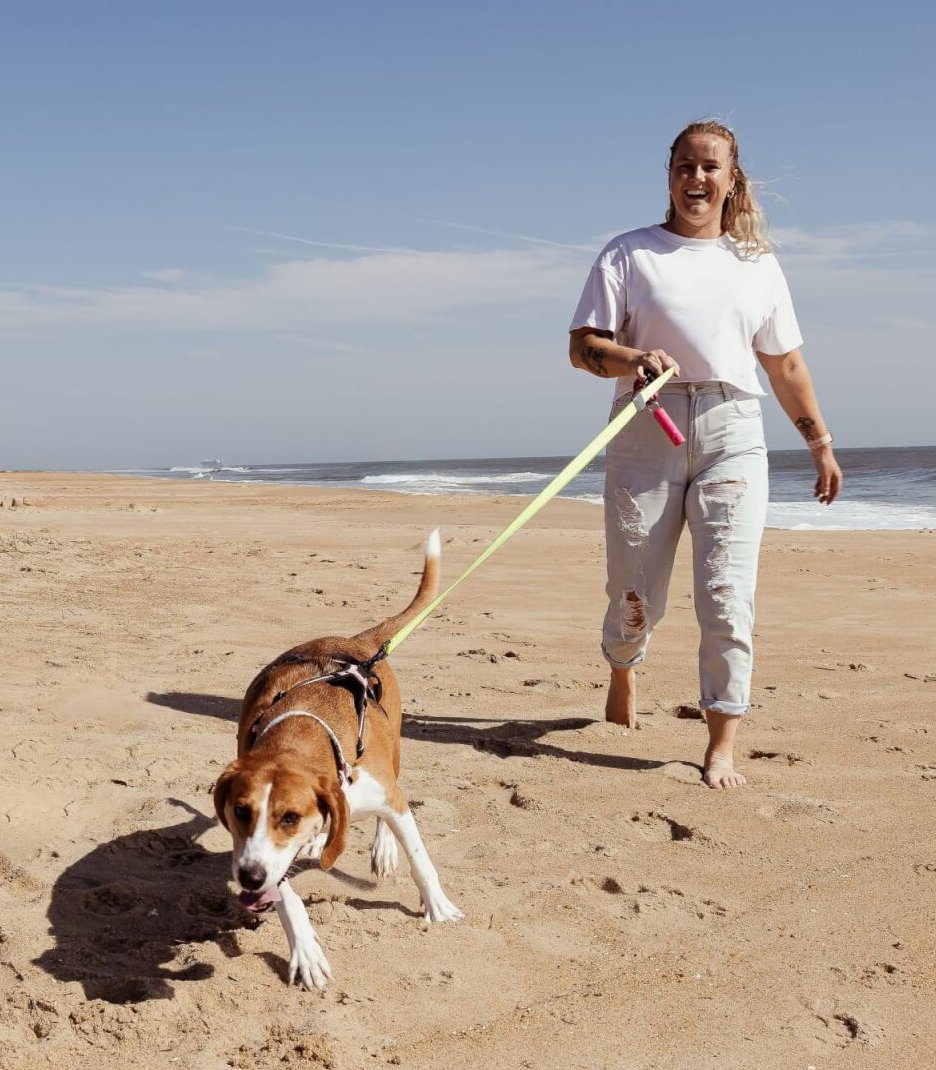
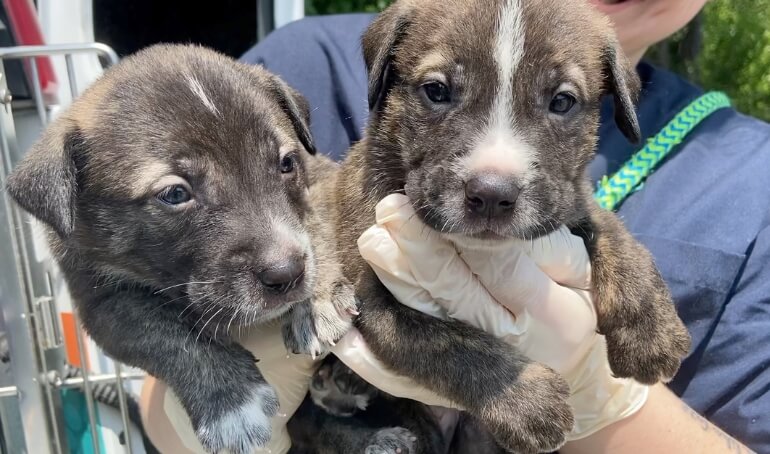
Behind the Scenes with the VBSPCA Isolation & Nursery Team
Have you ever wondered what it is like to work at an animal shelter? Here at the Virginia Beach SPCA, we have more than 60 employees who connect people and pets. Our team members serve in a variety of roles, and each individual is an integral part of working towards the mission of ending animal suffering while increasing human compassion. This month we want to take you behind the scenes with the VBSPCA Isolation & Nursery Team.
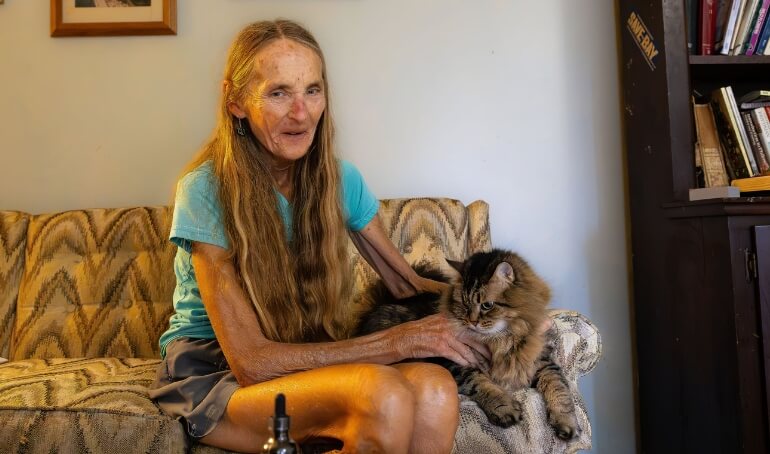
Happy Tails | Savannah
Every single animal that comes through our shelter has a story. Some are complex, many are sad, but all of them get better the minute they arrive at the Virginia Beach SPCA. Savannah was surrendered to the VBSPCA in February 2023 due to her previous family’s financial challenges. Like many animals, the six year old tabby had a hard time adjusting to life in the shelter. With patience and time, Savannah got to know the cattery team and began to show her sweet side. A few months later, a woman named Jane visited the shelter to meet Savannah after seeing her photo online. We recently caught up with Jane to get Savannah’s full adoption story.
When did you adopt Savannah?
May 4, 2023
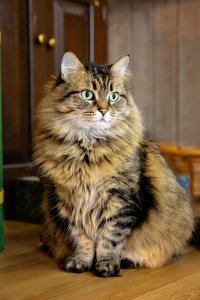 How did you find Savannah?
How did you find Savannah?
Unfortunately, my darling cat, Butterfly, whom I’d also adopted from the Virginia Beach SPCA, died this year. I was devastated and missed her so badly. I began to browse through the available cats on the VBSPCA website, and I finally visited the shelter. Savannah caught my eye because I’m partial to long-haired cats, and her story was a very touching one. Her previous owner had been forced to surrender her when he became homeless, and I could sense that she was grieving and missed him and her previous home very badly. I could empathize because I was also grieving, and so she and I began to bond.
How is Savannah doing in the home?
She was a little reclusive for the first few days, but she eventually began to come out and spend more time in the room with me. Now, I think that she’s settled in and has assumed the responsibility of running the household.
What sort of activities do you do together?
For a mature cat, she’s very playful, so we spend some time playing with the dangling toys or tossing a small stuffed animal around. We also sit on the couch together and watch movies, and she cuddles with me in bed every morning.
Does Savannah have any funny quirks?
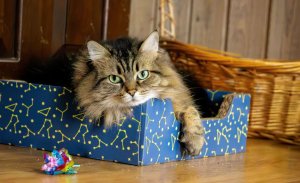 She sometimes reminds me of a dog because Savannah will lie down and roll over when she wants attention. For reasons that I don’t understand, she also likes to hunker down on her scratching post. It seems as if this would be very uncomfortable because the scratching post isn’t large enough for her to lie comfortably on and is, of course, very scratchy. She also has a way of pushing her head into my hand when she wants to be petted.
She sometimes reminds me of a dog because Savannah will lie down and roll over when she wants attention. For reasons that I don’t understand, she also likes to hunker down on her scratching post. It seems as if this would be very uncomfortable because the scratching post isn’t large enough for her to lie comfortably on and is, of course, very scratchy. She also has a way of pushing her head into my hand when she wants to be petted.
How has Savannah enriched your life so far?
She greets me every afternoon when I come home from work, and she’s on my bed each morning when I wake up. I think this is her way of letting me know that she’s settled into her new home and is content living with me.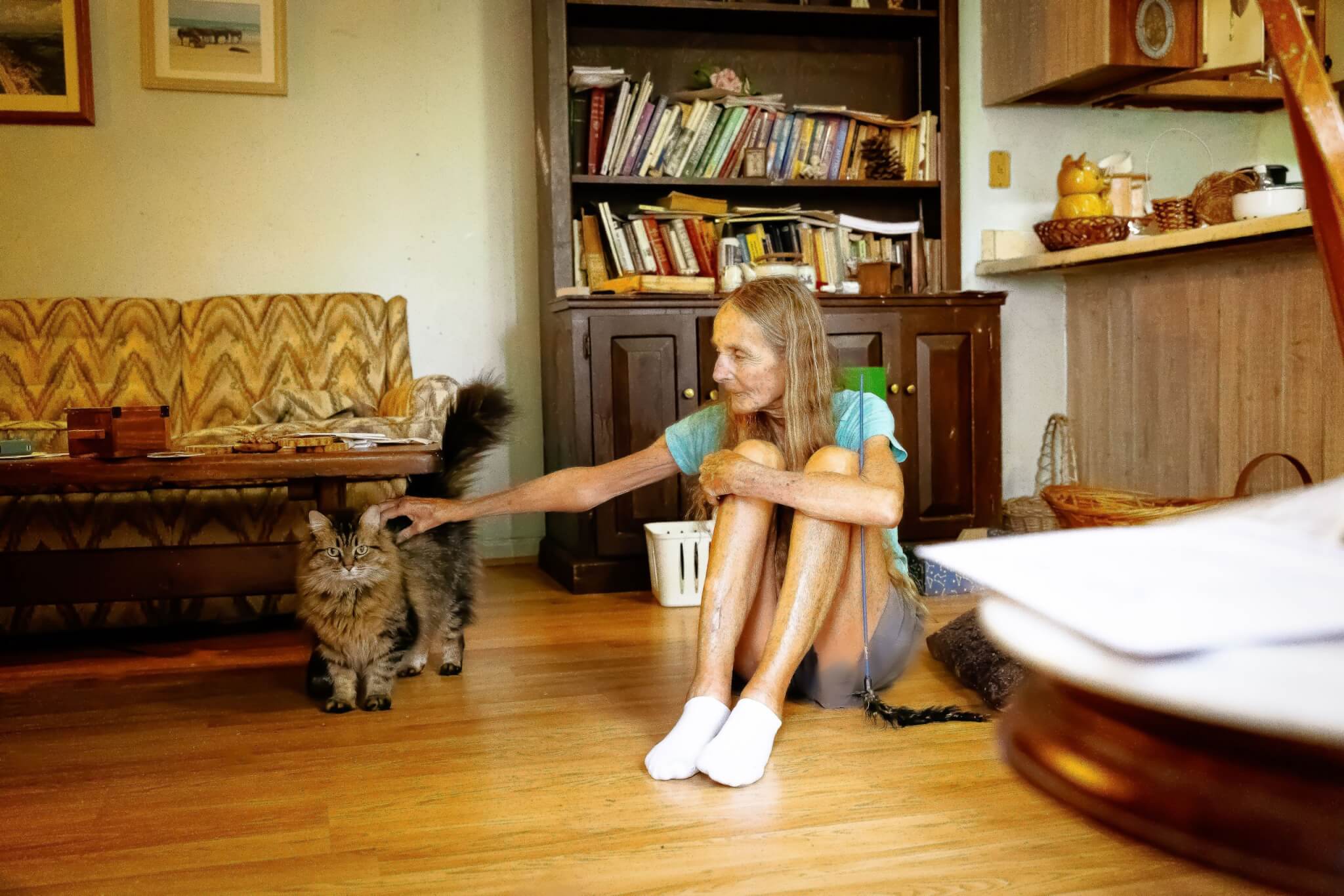
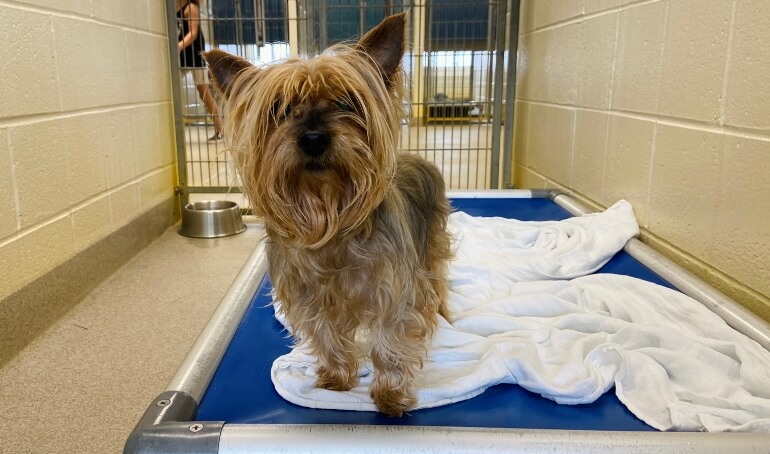
Senior Dogs at VBSPCA Fetch $10,000 Grant
Old dogs have something to wag about this summer, as The Grey Muzzle Organization announces the recipients of its annual grants, and dogs at the Virginia Beach SPCA are among the winners.
The VBSPCA is one of 90 animal welfare groups chosen from 370 applicants to receive a grant to help local senior dogs. The winning groups received $848,000 in grants to help save or improve the lives of at-risk old dogs in their communities. A total of $10,000 was awarded to the VBSPCA.
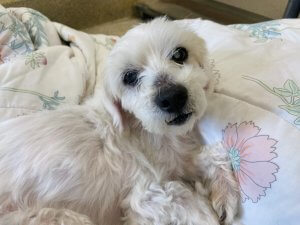
“This grant will help us give senior dogs like 16-year-old Sampson the veterinary and dental care they need so they’re ready to go to their forever homes,” said Derby Brackett, CEO of the VBSPCA. “No one is more grateful or loving than an old dog, and we’re looking forward to helping more senior dogs get the second chance they all deserve.”
Over the past 15 years, the national nonprofit Grey Muzzle Organization has provided more than $4.6 million in grants to support its vision of “a world where no old dog dies alone and afraid.”
“Thanks to the generosity of our donors, we’re delighted to help deserving organizations like the Virginia Beach SPCA make a difference in the lives of dogs and people in their communities,” Grey Muzzle’s Executive Director Lisa Lunghofer said. “Many senior dogs in Hampton Roads are enjoying their golden years in loving homes thanks to the wonderful work of the VBSPCA.”
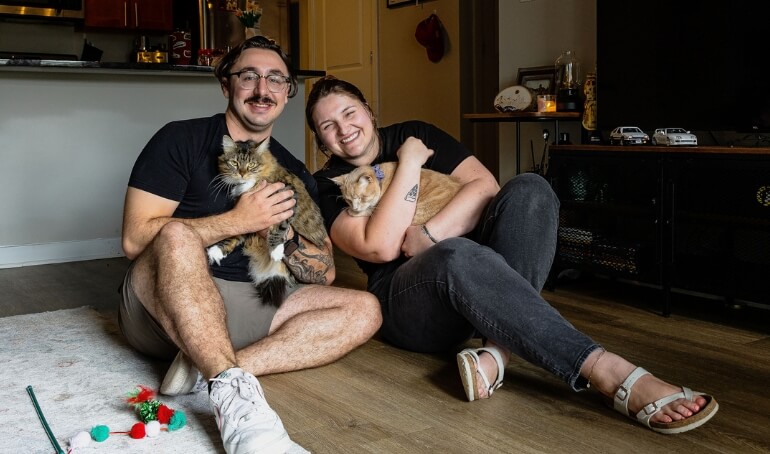
Happy Tails | Citrus
Every single animal that comes through our shelter has a story. Some are complex, many are sad, but all of them get better the minute they arrive at the Virginia Beach SPCA. Citrus was brought to the VBSPCA as an older kitten in need of medical attention in September 2022. He was born with a painful birth defect in both eyes, and the VBSPCA clinic team surgically removed them to alleviate his discomfort. As he adjusted to life as a blind cat in the shelter, he quickly became a staff favorite and would even take walks around the cattery on a leash.
Once Citrus recovered from his surgery, it didn’t take long before he got the attention of one couple who was visiting the shelter. On November 13, 2022, Christine and her husband welcomed Citrus into their home. We recently caught up with Christine to get an update on Citrus.
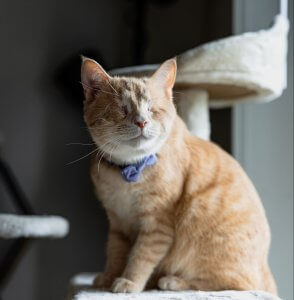 How did you find Citrus?
How did you find Citrus?
We saw a sign that said to “ask about Dooby,” which was Citrus’ name at the VBSPCA. When I did, he was instantly just so lovely and food motivated, which was super cute. I knew I wanted to bring him home and give him the life he deserved. My husband has renamed him Citrus for his spicy little attitude he can have.
How is Citrus doing in the home?
He is doing so good. He has two siblings that he spends his time snuggling with and running around the house with.
What sort of activities do you do together?
Oddly enough, Citrus loves taking baths. The bathroom is his favorite place. He also has three cat towers that he proudly gets to the top of. He also loves begging for my food at my feet like a dog would do. It’s my favorite thing.
Does Citrus have any funny quirks?
With his love of the bathroom comes the funniest thing ever: I call them his jumping jacks, where he stands on the corner of the tub, faces the tile on his hind legs with his arms up, and – for at least a minute – he jumps in one spot. Also another funny thing that he does is put his front feet into the food bowl while he eats.
How has Citrus enriched your lives so far?
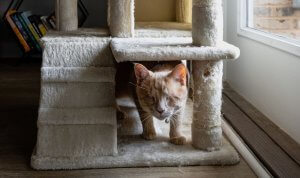 He certainly can be entertaining. He makes us laugh but he is also quite the perfect companion to me and my husband. He completes our little family and he brings a personality of his own that makes me happy to come home to every day.
He certainly can be entertaining. He makes us laugh but he is also quite the perfect companion to me and my husband. He completes our little family and he brings a personality of his own that makes me happy to come home to every day.
Why do you think people should consider adopting a pet with special needs?
I think the biggest misconception is that pets with special needs are hard to live with or require more attention, but Citrus is super intelligent. I assumed I’d need to teach him everything to live a happy life, but the first thing he did when he got home was sniff out his litter box and use it. He is just like his brother and sister, just missing some parts.
Is there anything else you would like to add?
I have worked with the VBSPCA on many different occasions as far as adopting two loving pets, seeking medical care [at the VBSPCA Clinic], and volunteering for Beach Buddies. I can say it is one of the greatest pleasures in my life choosing to adopt my cats from the VBSPCA. They hold all my happiness, and I truly hope everyone can experience adopting special needs animals, elderly animals, or even animals that just need a chance at life again.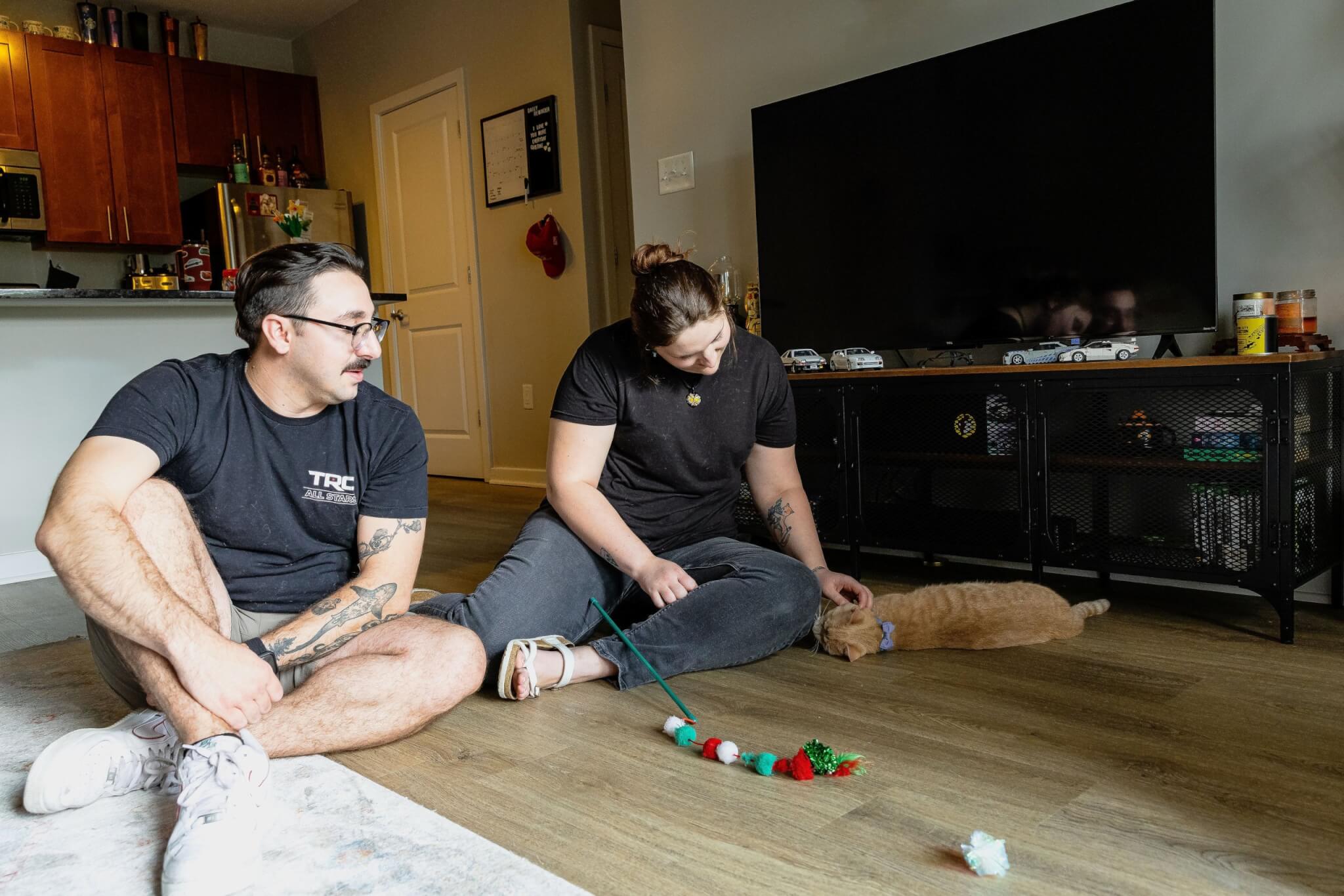
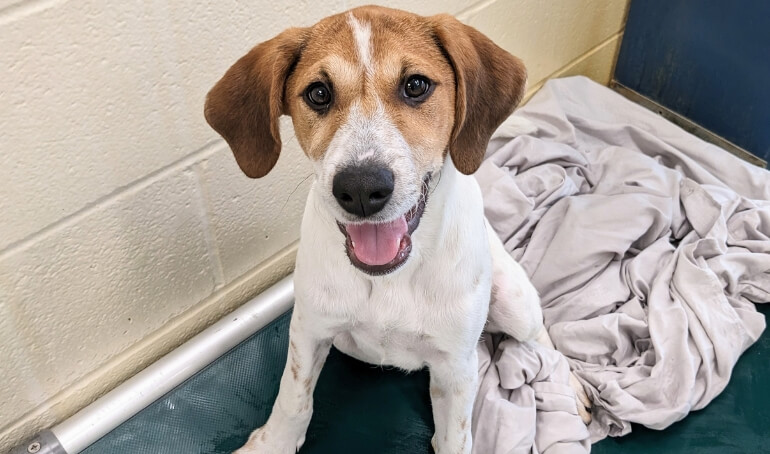
Behind the Scenes of the VBSPCA Kennel
Have you ever wondered what it is like to work at an animal shelter? Here at the Virginia Beach SPCA, we have more than 60 employees who connect people and pets. Our team members serve in a variety of roles, and each individual is an integral part of working towards the mission of ending animal suffering while increasing human compassion. This month we want to take you behind the scenes of the VBSPCA Kennel.
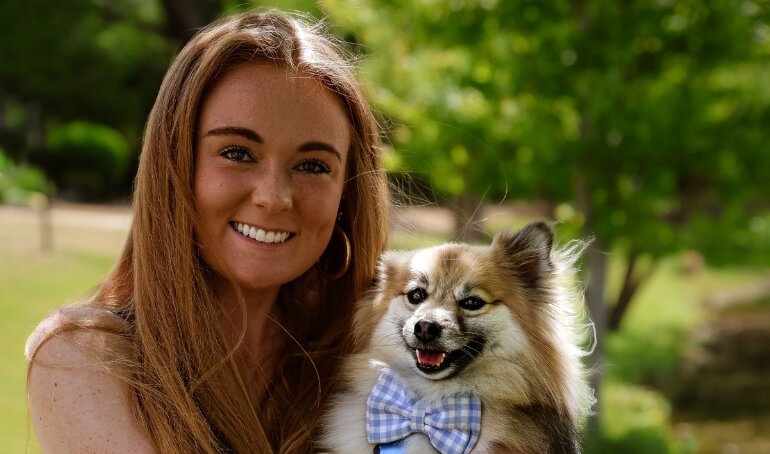
Happy Tails | Bentley
Every single animal that comes through our shelter has a story. Some are complex, many are sad, but all of them get better the minute they arrive at the Virginia Beach SPCA. Bentley was transferred to the VBSPCA from another shelter in June 2021. Previously the little Pomeranian mix had been chained outside with other dogs, living in filth. When Bentley arrived with a limp, the VBSPCA clinic team immediately examined him and determined he had been shot. There were buck shot fragments still in his leg, and the leg was broken. Our veterinarians amputated his leg, and Bentley was fostered by one of our staff members while he recovered from the surgery.
Despite living through years of neglect, Bentley was very friendly with humans. Once he was ready for adoption, his foster mom set up meet and greets with potential adopters. He immediately clicked with a young woman named Cat, who was ready to adopt a dog after living without a canine companion during her undergraduate program. We recently caught up with Cat to hear about how life with Bentley has been since she adopted him.
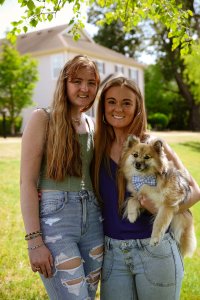 How did you know that Bentley was the one for you?
How did you know that Bentley was the one for you?
My sister, Melanie, was actually the one who found Bentley! She saw him online and thought that he would be a great fit! I was won over by the story of his previous life and was instantly head over heels for this little dog.
How is Bentley doing in the home?
Bentley has done exceptionally well since I brought him home! We have adopted a great routine in the mornings including a walk around the lake, then breakfast and coffee together (his breakfast and my coffee, of course) before getting ready for school!
Does Bentley have any funny quirks?
As boy dogs do when they go potty, he attempts to lift up his back leg. However, since he is down a leg in the back, he ends up walking on his front paws in an attempt to keep his balance!
How has Bentley enriched your life so far?
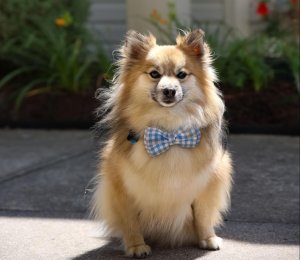 Growing up, I had always been accustomed to living with big dogs and always thought that I would stick to that trend. However, my condo association requires dogs to be under a certain weight, so I had to downsize. I very quickly realized that size does not matter – I never thought that I could love a dog as much as him! He has become my little shadow. He sleeps next to me, follows me around when I cook, and loves taking naps on the couch after a long day. Not once have I felt lonely since adopting him. Similarly to most dogs, he is simply content existing with his human!
Growing up, I had always been accustomed to living with big dogs and always thought that I would stick to that trend. However, my condo association requires dogs to be under a certain weight, so I had to downsize. I very quickly realized that size does not matter – I never thought that I could love a dog as much as him! He has become my little shadow. He sleeps next to me, follows me around when I cook, and loves taking naps on the couch after a long day. Not once have I felt lonely since adopting him. Similarly to most dogs, he is simply content existing with his human!
There is truly nothing like the experience of owning a dog! Their loyalty to stay by your side, the fun they have on walks together, and the excitement they show when you walk through the door is truly an experience like no other. Sometimes, one can feel small in this world and feel as if they have no power to make a difference – however, when you make the decision to adopt a dog, you have changed their life forever.
Why do you think people should consider adopting a pet with special needs?
I believe that adopting a dog with special needs is truly a privilege if one has the ability to do so. Having the patience to provide for a dog with special needs takes a certain “breed” and may not be for everyone. However, if one feels as though they are called to do so, it can be incredibly enriching to provide for an animal that may need a little extra help. From my experience, most dogs (and Bentley as well) have an incredible ability to adapt and flourish with just the added bit of help from their humans!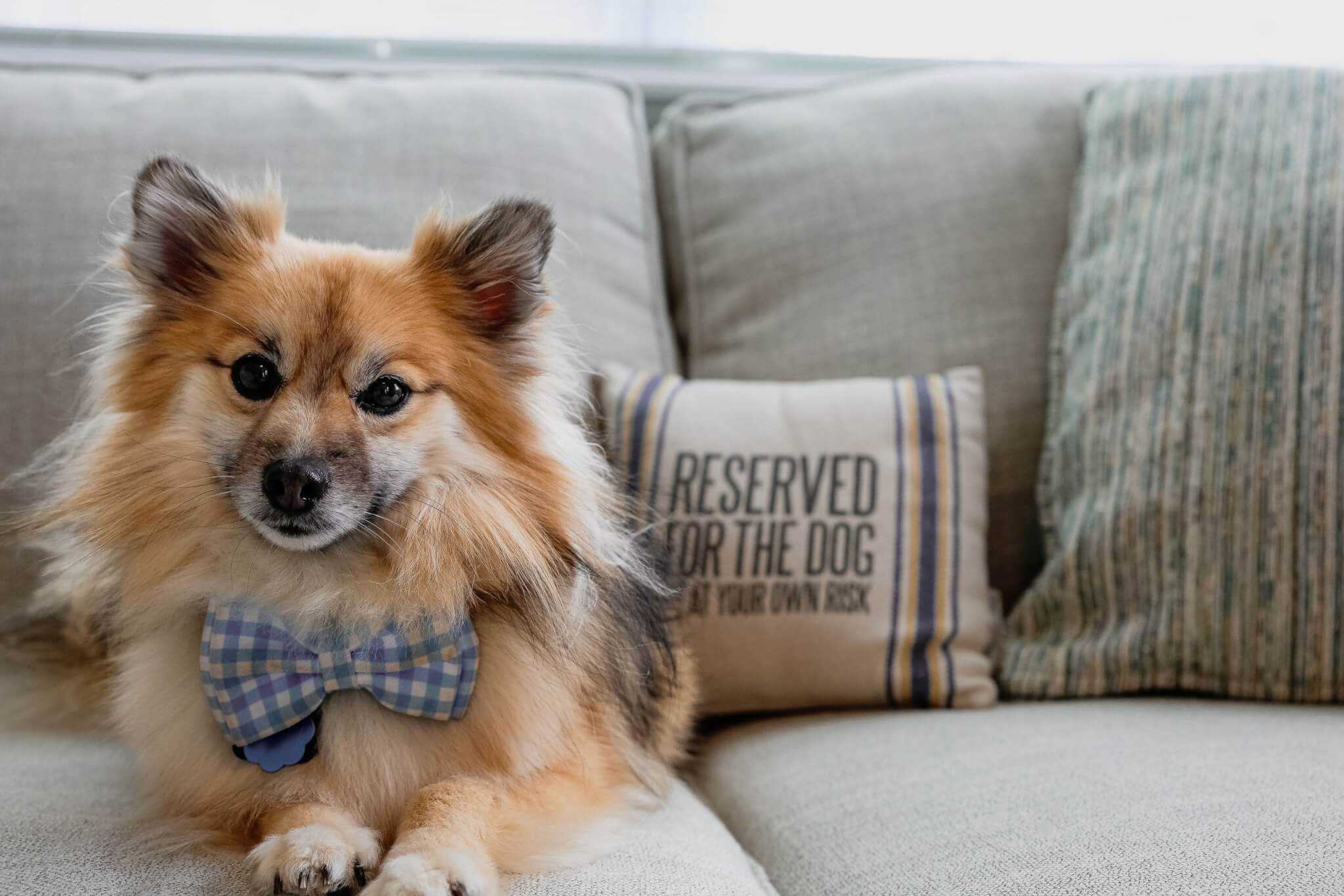
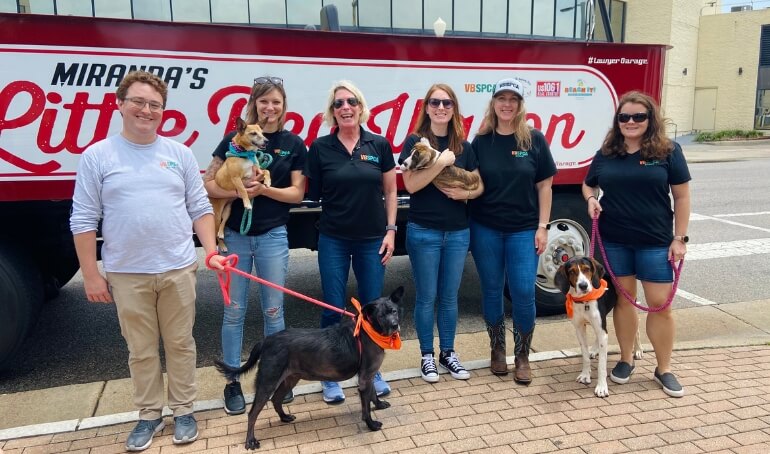
VBSPCA Goes Backstage at the BEACH IT! Festival
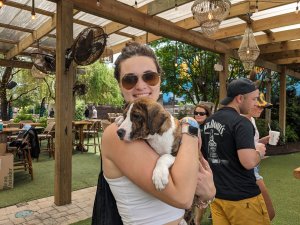 The inaugural BEACH IT! Country Music Festival kicked off with some special four legged friends. The Virginia Beach SPCA was honored to be part of Miranda’s Little Red Wagon donation drive at The Shack ahead of the festival’s opening on Friday, June 23, 2023.
The inaugural BEACH IT! Country Music Festival kicked off with some special four legged friends. The Virginia Beach SPCA was honored to be part of Miranda’s Little Red Wagon donation drive at The Shack ahead of the festival’s opening on Friday, June 23, 2023.
Despite the rounds of storms rolling through, country music fans stopped by to meet adoptable dogs and puppies, donate to the animals, and learn about the VBSPCA. Each person who made a financial donation or dropped off an item from the VBSPCA Wish List was entered into a raffle for two VIP tickets to the BEACH IT! Festival as well as an autographed copy of Miranda Lambert‘s new cookbook, “Y’all Eat Yet?”.
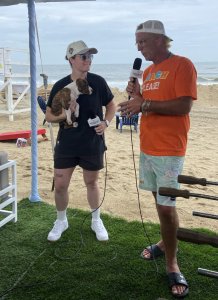
The donation drive was initiated by country artist Miranda Lambert’s MuttNation Foundation, which organizes Fill the Little Red Wagon donation drives at her concerts to benefit shelters across the country. US1061 – Real Country teamed up with Lawyer Garage to create a bus-sized ‘Little Red Wagon’ for this special event.
Following the donation drive, VBSPCA adoptable dogs went backstage to greet the crew and musical artists. Spud, a 12 week old Terrier mix, even got to make a special appearance with singer Lily Rose during a backstage interview. A big thank you to everyone who stopped by to support the VBSPCA animals!
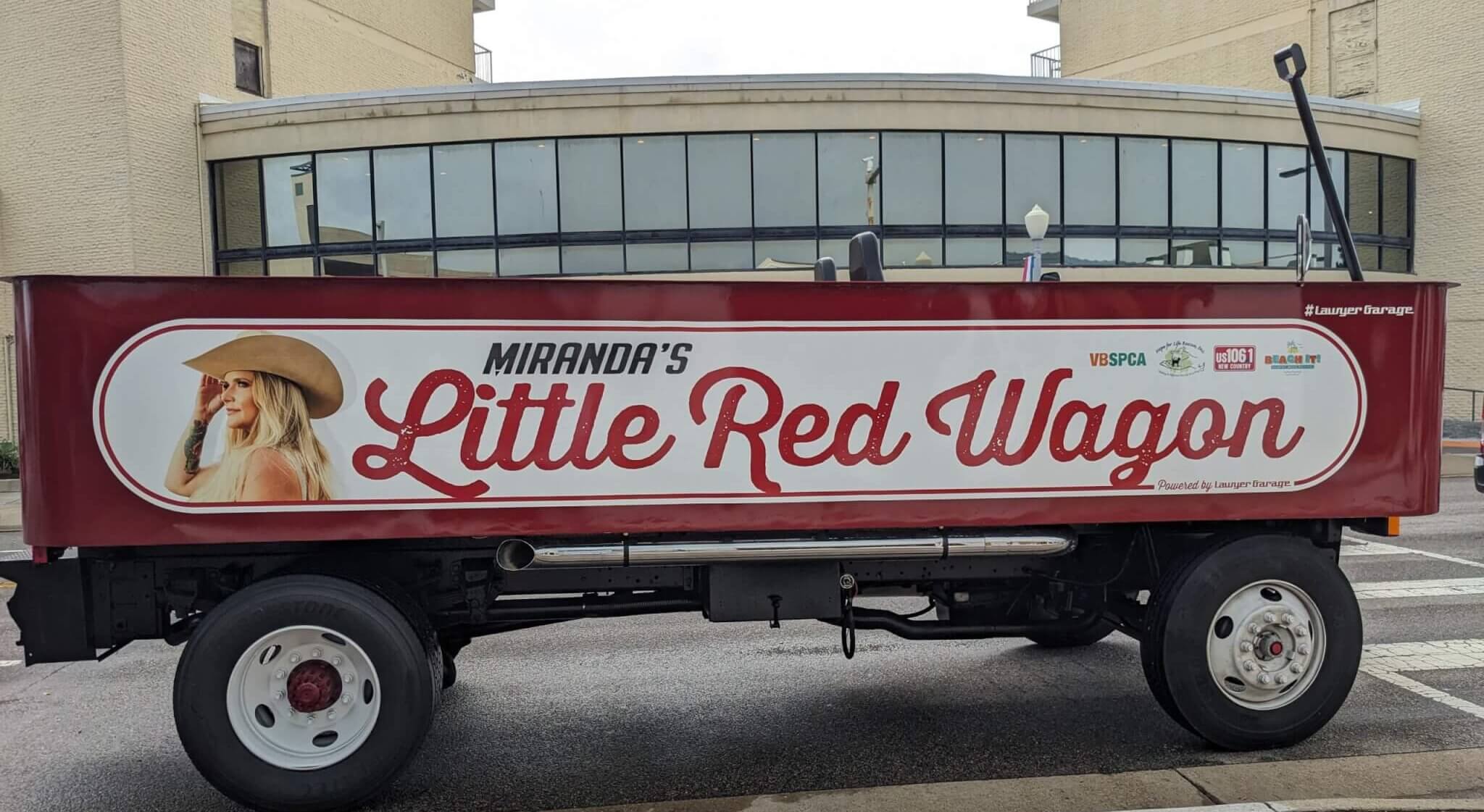

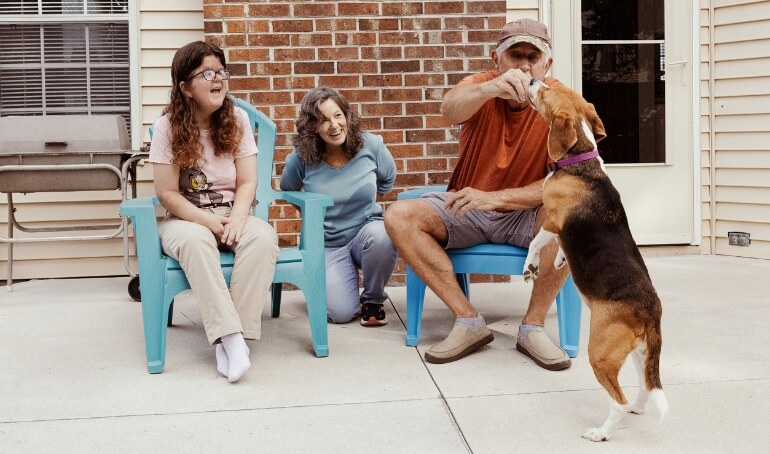


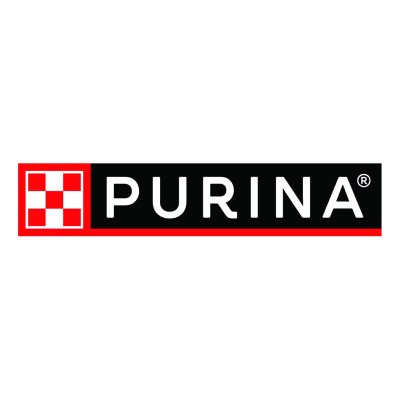
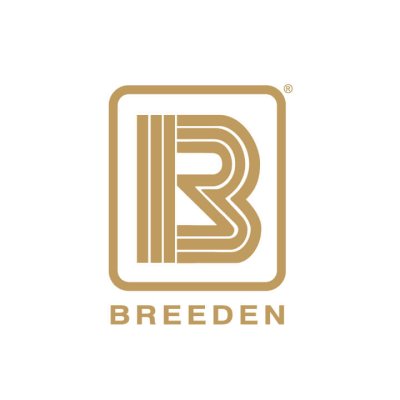

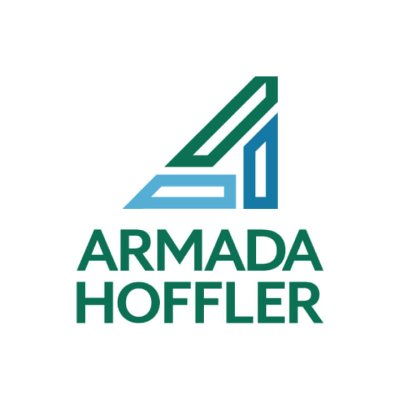
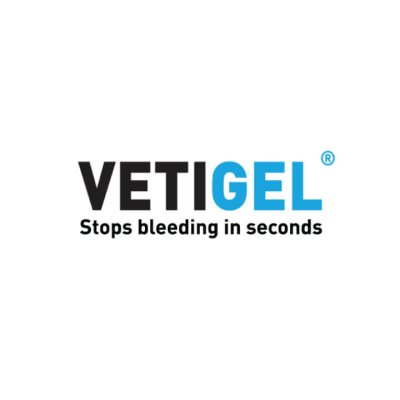









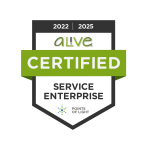
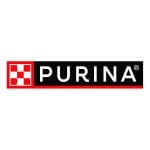


Last Updated: October 10, 2023 by vbspcaadmin
Happy Tails | Molly
Every single animal that comes through our shelter has a story. Some are complex, many are sad, but all of them get better the minute they arrive at the Virginia Beach SPCA. Molly was one of 17 beagles the VBSPCA received in August 2022 from the Envigo facility in Cumberland, Virginia. The dogs were bred to be sold to laboratories for animal experimentation. Since they had only known life in a cage environment, some of the adults in the group had a long road ahead to learning how to “be a dog.”
Not long after the dogs arrived, Sarah, her mother, Nancy, and her father, Scott, heard about these special dogs and came in to meet them. Molly caught their eye, and they soon took her home. We recently caught up with Sarah to hear how Molly is doing now.
We heard about the 4,000 beagles that were being rescued from the Envigo facility in Cumberland last summer. She was one of four adult beagles of this group (the rest were puppies), and we found her scared and shaking at the front of her kennel near the visitor walkway. Our hearts went out to her.
How is Molly doing in the home?
Molly has been gradually “learning” how to be a dog/pet. She is still jittery at sudden sounds and movements, but it is so enjoyable seeing her doing “zoomies” around the backyard. We had a trainer come in for several sessions, which really helped.
What sort of activities do you do together?
We have taken her for decompression walks at local parks, done some simple training, and have taken her to the beach and on several long trips in the car to New York, Alabama, and North Carolina, as well as cabin camping at the Virginia State Parks.
Molly finds such things in nature as leaves, grass, insects, pine cones, and wood bark more fascinating than the toys we bought for her to play with. Molly does enjoy the Kong toy and will get on her hind legs the same way as Snoopy does in the Peanuts comics. Molly does not like ceiling fans! Being a beagle, Molly is stubborn and extremely scent and food oriented. She’s always curious about what is going on in the kitchen.
How has Molly enriched your lives so far?
Molly is a sweet and gentle dog. She scares easily, but we have learned to be patient and loving with her. She’s been a welcome addition to our family, particularly after the recent death of our 16 year old Schnauzer-Cocker mix, Rocky.
